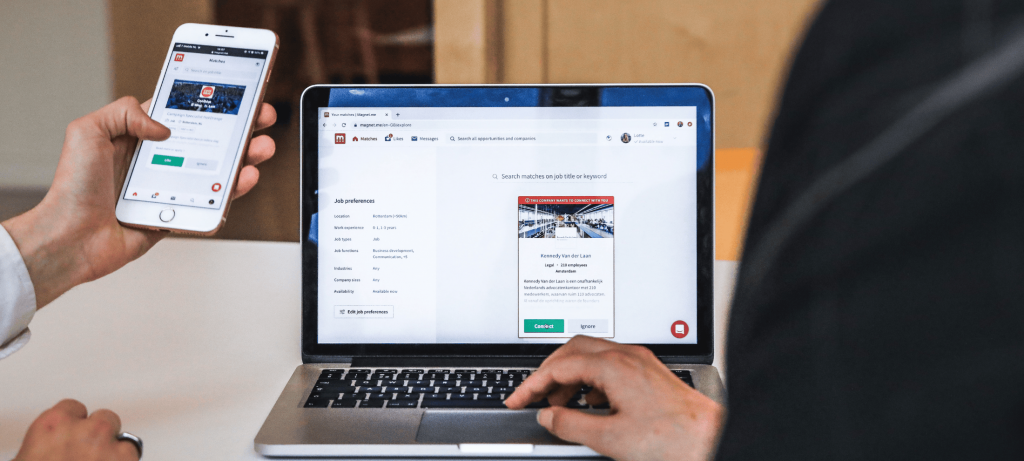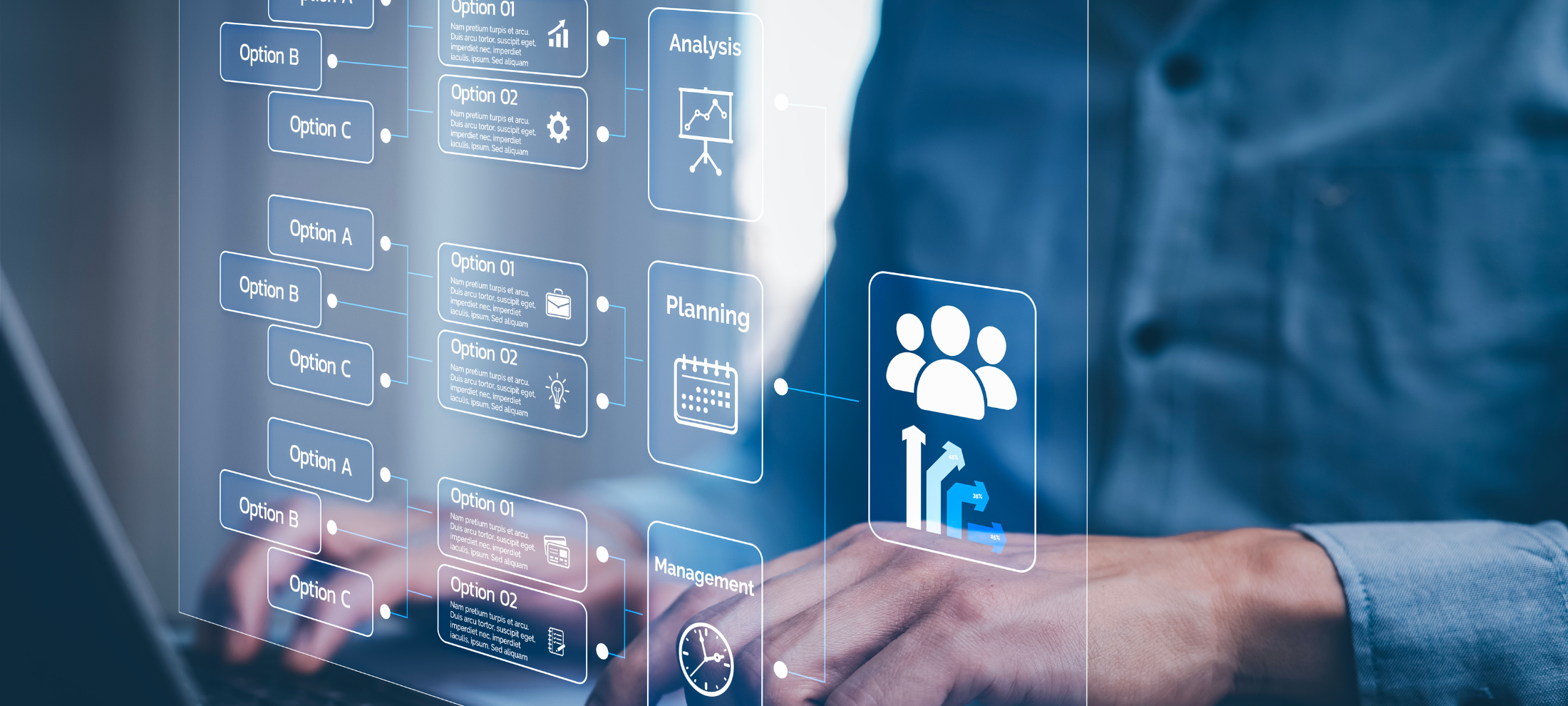
AI for Hiring
Minimizing the Effects of AI Hiring Bias: A Practical Guide to Overcoming Bias And Achieving Fairness in Hiring
June 19, 2023



Kiran Kazim
Content Writer
Imagine you’re a curator for a prestigious art gallery, tasked with curating an exhibition that represents the diverse and talented artists of the world. As you embark on this mission, you are armed with a powerful tool—an advanced AI assistant that can analyze artistic styles, techniques, and themes with unmatched precision. However, as you delve into the selection process, you start to notice a subtle bias emerging within the AI’s recommendations. Certain artists, despite their undeniable talent, seem to be overlooked while others are disproportionately favored. What went wrong?
Just as this hypothetical AI curator encountered biases in its decision-making process, today’s hiring systems powered by artificial intelligence face similar challenges. With organizations increasingly relying on AI-driven tools to streamline recruitment and eliminate human bias, there is a growing concern that these technologies may inadvertently perpetuate or even amplify existing biases. After all, AI systems are only as unbiased as the data they are trained on and the algorithms they employ.
In this blog, we will explore the crucial topic of minimizing the effects of AI hiring bias, offering a practical guide to help organizations overcome bias and achieve fairness in their hiring processes. By drawing parallels between the art curator’s struggle and the challenges faced in the realm of hiring, we will shed light on the complexities of bias in AI systems and present actionable strategies to mitigate its impact.
Join us as we navigate the intricate landscape of AI-powered hiring, where fairness and inclusivity are vital ingredients for building diverse and high-performing teams.
Discover the Future of Recruitment with Cutting-Edge Artificial Intelligence


While AI hiring bias is a well-known concern, it is crucial to acknowledge its negative impact on the hiring process. Overcoming this bias and striving for fairness in recruitment are vital steps towards fostering inclusivity and diversity within the workforce. Recognizing the existence of bias in AI hiring is the initial stride towards addressing this pressing issue.
It is important to comprehend that AI systems are inherently unbiased or biased to the extent that their creators program them. When not programmed correctly, these systems can inadvertently perpetuate existing biases. However, the response from the industry in addressing this problem has been somewhat mixed.
Certain companies have taken proactive measures by establishing guidelines for responsible AI usage in hiring, prioritizing ethical considerations. On the other hand, some organizations prioritize efficiency over fairness and continue to rely on biased algorithms. This discrepancy highlights the need for collective action and industry-wide commitment to ensuring unbiased hiring practices.
It is essential to recognize that AI has the capability to amplify human biases in ways that were previously unimaginable. As a result, actively working towards achieving fairness in hiring is of paramount importance in order to create a level playing field for all candidates.
By acknowledging and actively addressing AI hiring bias, we can work towards building an inclusive and equitable recruitment process that embraces diversity and provides equal opportunities to all job seekers.
Decoding the Enigma of AI Bias


When discussing AI bias in the context of hiring, it is crucial to grasp its nature and underlying causes. Instances of AI hiring bias can be observed through the presence of discriminatory algorithms that exhibit a preference for specific demographic groups while disregarding others.
Such biases, if left unchecked, can lead to serious repercussions, including the perpetuation of systemic discrimination and a restricted sense of diversity within work environments. Regrettably, the prevailing reality is that many current AI hiring systems suffer from bias, which can manifest itself in unintended ways.
Understanding AI in Hiring Bias: Definition and Origins
So you’ve just stumbled upon the secret to understanding how discrimination sneaks its way into the hiring process! AI bias is a growing concern for organizations that want to ensure fairness and equal opportunities for job seekers. Bias can come from a variety of sources, including the data used to train algorithms, the design of the algorithms themselves, and even human input.
To better understand how AI bias arises in hiring processes, consider these four factors:
1. Data selection: The data used to train AI models may reflect historical biases or inaccuracies that perpetuate discrimination against certain groups.
2. Algorithm design: The algorithm itself may be flawed or biased due to a lack of diversity among its creators or inadequate testing.
3. Human input: Even with advanced technology, humans are still involved in decision-making when it comes to who gets hired. These individuals may bring their own conscious or unconscious biases into the process.
4. Lack of transparency: Without clear documentation and monitoring systems, it can be difficult to identify when bias occurs in an AI system.
These causes have serious implications for job seekers who belong to marginalized groups and can lead to unfair disadvantages in the hiring processes. Thankfully, solutions are available for organizations wishing to mitigate these risks and promote a more equitable recruitment process. But first, let’s explore some examples of AI hiring bias.
Get ready to see this real-life example of how AI bias can affect job seekers, and discover why it’s important to address this issue in the hiring process.
One example is Amazon’s AI recruiting tool which was trained on resumes submitted over a 10-year period, which were mostly from men. As a result, the tool learned to favor male candidates and downgraded resumes containing words commonly used by women such as ‘women,’ ‘feminine,’ and ‘diversity.’ This shows how biased AI algorithms can cause harm by perpetuating discrimination against certain groups.
So the above example highlights the impact of AI bias in hiring and emphasizes the need for solutions to ensure equal opportunities for all candidates.
As you can see, unchecked AI hiring bias can have serious consequences for job seekers who are already struggling with systemic barriers in the workplace. But don’t worry, there are ways to mitigate these biases through conscious efforts toward creating fairer selection processes.
The Impact of Unchecked AI Hiring Bias: Consequences and Ramifications
Unchecked AI bias in the hiring process can lead to unfair and discriminatory practices that perpetuate systemic inequalities. The consequences of such biases are far-reaching, affecting not only individual job applicants but entire communities. Mitigating the impact of AI hiring bias is crucial for companies that want to foster a diverse and inclusive workplace culture.
When an AI system is biased, it can reinforce stereotypes and exclude certain groups from consideration for jobs they could excel at. This can further marginalize underrepresented minorities who may already face obstacles in accessing employment opportunities due to systemic discrimination. Not only does unchecked AI bias lead to ethical concerns surrounding fairness and equity, but it also has legal implications that organizations need to consider. Without addressing these issues, companies risk facing lawsuits or damage to their reputation as a result of discriminatory hiring practices.
Moving forward, it’s important for organizations to take proactive steps towards mitigating the impact of AI hiring bias on potential candidates. Understanding the current landscape: the prevalence and manifestations of bias in current AI hiring systems will be key in identifying areas where improvements can be made towards achieving fairer hiring practices.
Unveiling Bias in AI Hiring Systems: The Prevailing Landscape and Manifestations
You’ve learned about the dire consequences of unchecked AI hiring bias in the previous section. Now, let’s take a closer look at the current landscape and see how prevalent and manifest this issue is in actual AI hiring systems.
Potential sources of bias are numerous, ranging from training data that reflects historical inequalities to algorithms that use irrelevant or discriminatory factors to make decisions. The impact analysis of such bias could be devastating for individuals, as they may be excluded from job opportunities based on factors outside their control, such as race, gender, or socio-economic background.
Moreover, it could also hurt companies’ bottom lines by limiting the pool of qualified candidates and exposing them to legal liability. While there are some regulations in place to prevent discrimination in hiring practices, many organizations still struggle to identify and mitigate biases effectively.
In light of these challenges, future prospects for fairer AI hiring seem uncertain without concerted efforts from all stakeholders involved.
Now that you have a better understanding of how pervasive AI hiring bias can be, it’s crucial to learn how to spot potential biases in your own AI systems before they cause harm.
Detecting AI Hiring Bias: Unveiling Potential Bias in Your AI Systems


It’s important to watch out for potential bias in your AI systems when it comes to identifying the right candidates. Common biases to watch for include gender, race, and age biases. Addressing data gaps is crucial because if the underlying data used to train the AI system is biased, then the decisions made by the system will also be biased.
Mitigating algorithmic bias requires a comprehensive approach that involves auditing and testing of algorithms. To identify potential bias in your AI hiring systems, you need to start by examining your training data. Look out for any missing or incomplete data sets that may be contributing to skewed results.
Next, evaluate how your model handles different demographic groups. If certain groups are consistently underrepresented or overrepresented, then there might be an issue with bias in your system. Finally, consider using external auditors or third-party testing services to verify that your AI hiring systems are fair and unbiased.
This can help ensure that you’re not inadvertently excluding qualified candidates based on factors such as race, gender, or age. By taking these steps early on in the development process of your AI hiring system, you can minimize potential biases and create a more equitable recruitment process.
Mitigating AI Hiring Bias: Strategies to Minimize Discrimination in the Hiring Process
If you want to minimize AI hiring bias, there are several strategies you can employ. One important step is to build diversity and inclusion into your AI system by training it on diverse data sets.
Continual review and calibration of the AI system are also crucial, as this ensures that potential biases are regularly checked and adjusted.
Finally, don’t forget the role of human oversight in maintaining a balanced approach between AI and human decision-making.
Fostering Diversity and Inclusion in AI: Steps to Ensure Training on Diverse Data Sets
By intentionally incorporating a range of perspectives and experiences into the training data, you can take an important step towards building more inclusive AI systems. Diversity training is just as important for AI as it is for human employees; without it, your AI system may be trained on biased or incomplete data sets that perpetuate discrimination.
Ethical considerations should also guide your approach to data collection techniques. Make sure the data you use is both relevant and representative of diverse groups.
To ensure that your AI system accurately reflects the diversity of its user base, consider conducting regular reviews and calibrations. This process will help you identify any biases that have crept in over time and adjust your algorithms accordingly.
By taking these steps to build more inclusive AI systems, you can create a work environment that values diversity and promotes fairness in hiring practices.
Maintaining Bias-Free AI Systems: The Importance of Continuous Review and Calibration
As you know, building diversity and inclusion in AI systems is a crucial step in minimizing hiring bias. However, it’s not enough to stop there. Regular assessment of the AI system is necessary to ensure that it continues to function without bias.
This ongoing process of bias prevention requires calibration techniques that take into account the changing nature of society and evolving definitions of fairness. Regular assessment involves evaluating the effectiveness of the AI system in achieving its intended purpose while minimizing potential biases.
Bias prevention requires identifying patterns and trends within the data used by the AI system, as well as monitoring for any unintended consequences or feedback loops that may amplify existing biases. Calibration techniques involve adjusting algorithms or data sets based on new information or changes in societal norms, ensuring that they remain relevant and fair over time.
By regularly assessing and calibrating your AI systems, you can minimize potential biases and achieve a more inclusive hiring process. It’s important to remember that even with an effective AI system, human oversight is still necessary to maintain a balance between machine decision-making and human judgment.
Without proper oversight, there is a risk of perpetuating existing biases or creating new ones unintentionally through reliance on automated decision-making alone. In the next section, we’ll explore how humans can work alongside AI systems to create a more ethical hiring process overall.
Harmonizing AI and Human Decision Making: The Crucial Role of Human Oversight
Maintaining a balance between AI and human decision making is essential in creating an ethical hiring process, and this section explores how human oversight plays a crucial role in achieving this balance.
Despite the advantages of using AI in recruitment, it’s important to recognize that machines can’t replace humans when it comes to decision-making. The ethical considerations surrounding the use of AI in hiring are complex, and relying solely on algorithms can lead to unintended biases that may be difficult to detect.
Human oversight balance is critical for mitigating algorithmic bias as well. While AI systems can help automate certain aspects of the recruitment process, they should never replace human judgment entirely.
Human intervention at key points throughout the recruitment process is necessary to ensure fairness and accuracy. This requires ongoing review and calibration of AI systems by qualified HR professionals who have experience working with diverse candidates from different backgrounds.
By maintaining a balance between AI and human decision making, employers can create an ethical hiring process that reduces bias while promoting diversity and inclusivity in the workplace.
Conclusion
You’ve taken the necessary steps to minimize AI hiring bias and achieve fairness in your recruitment process.
By identifying potential biases, implementing diverse data sets, and regularly testing and monitoring your AI systems, you’ve positioned yourself as a leader in inclusive hiring practices.
Not only will this approach lead to more diverse and qualified candidates, but it’ll also positively impact your company’s reputation and bottom line.
With minimized bias, you can attract top talent from all backgrounds and create a workplace culture that values diversity and inclusion. With EVA-REC’s help, you can easily assess the skill sets that are hard to measure, mitigate bias, and make the first round of screening 90% faster.
To experience the power of EVA-REC firsthand, we invite you to sign up for a free demo.
Turn top talent to employees fast
Hire, assess, onboard and manage top talent for every job. See how Elevatus streamlines everything; from acquire to new hire.
Request a demoAuthor



Kiran Kazim
Don't miss a thing!
Stay one step ahead. Subscribe and get the latest updates, news, and insights from Elevatus straight to your inbox.



![Balancing the Pros and Cons of Online Recruitment With the Right Tools [2024 Guide] | Elevatus An image of an HR manager defining the purpose of online recruitment to a new hire](https://www.elevatus.io/wp-content/uploads/2023/12/5-4.png)


